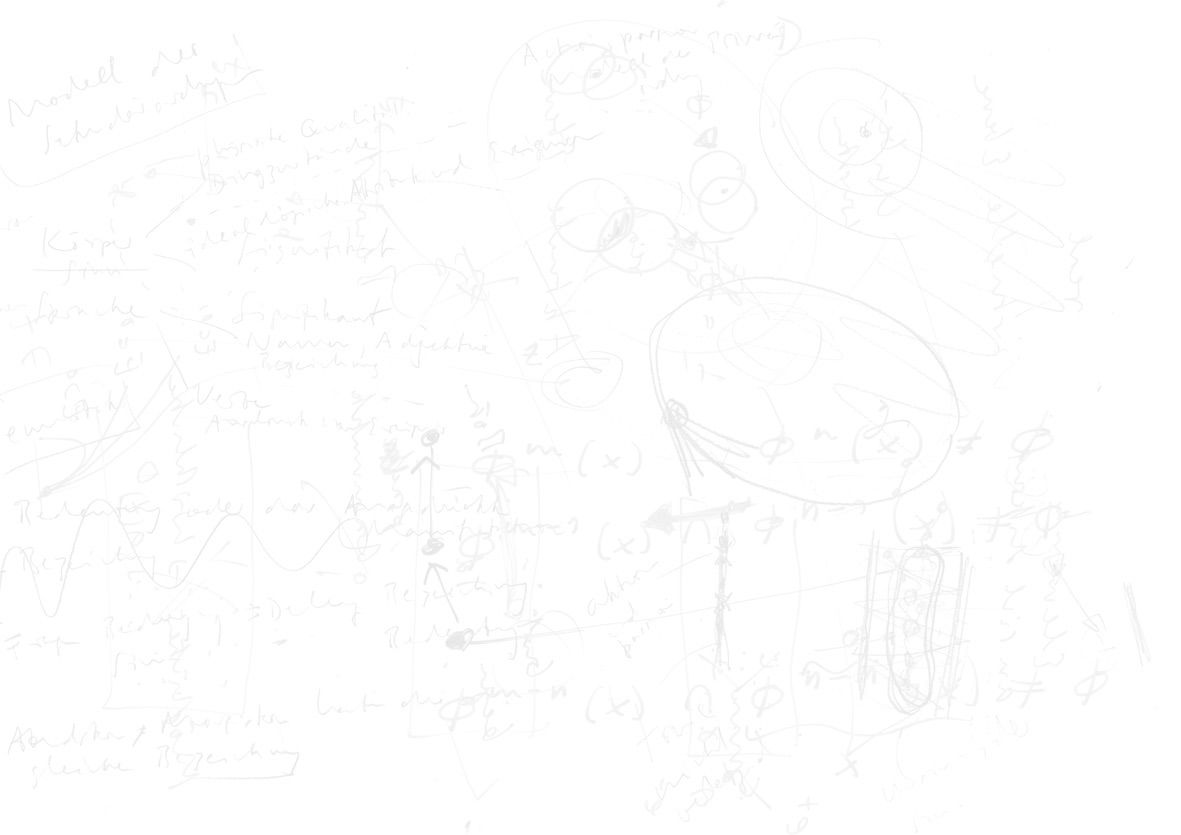
Dr. Dr. Timon Georg Boehm
Topology as Textology
The aim is to develop a text model that determines semantic structures and topics in texts using concepts of algebraic topology (together with Prof. Dr. Clemens Berger, Université de Côte d'Azur). The TopText model offers an alternative to quantitative, statistical methods of text analysis that is oriented towards the process of human reading, writing and understanding in hermeneutic cycles and yet is mathematically stringent. Temporality, recursion and contexts are implemented by modelling sentences with loops (one-dimensional closed paths in semantic spaces), which are related to each other by further loops. This network is embedded in a two-dimensional topological space, the semantic space. The topics, according to the hypothesis, correspond to the areas of this space subdivided by boundary cycles.
Feynman diagrams from the perspective of cognitive sciences
Feynman diagrams (going back to Nobel prize winner and Caltech professor Richard P. Feynman) are part of the standard toolbox of every particle physicist. They are simple, easy to use and allow a direct correspondence between graphical elements and terms in calculations of amplitudes for complex particle interactions. But they are more than just visual aids. In fact, they express the conceptual structures of the theory (here quantum field theory). The aim of the project is to show how Feynman diagrams are law encoding representations. To achieve this, we adopt methods from cognitive sciences and representation theory.
Together with Prof. Peter Cheng, School of Engineering and Informatics, University of Sussex, UK.
Also sprach Zarathustra. Vierter und letzter Teil
Eine Annäherung in gruppenanalytischer Perspektive
Zusammen mit Dr. med. Michael Niebler, Zürich.
Gründung der Akademie für Kunst und Philosophie Graubünden
Felix Hausdorff und Friedrich Nietzsche
(abgeschlossen 2021)
Das Projekt will untersuchen, wie die wenig bekannten philosophischen Schriften des Mathematikers Felix Hausdorff unter dem Pseudonym Paul Mongré, «Das Chaos in kosmischer Auslese. Ein erkenntnisskritischer Versuch» (1898) und «Sant’Ilario. Gedanken aus der Landschaft Zarathustras» (1879), sich auf Hausdorffs Schöpfungen in der mathematischen Topologie auswirkten, insbesondere auf seine Auffassung von Raum und Zeit als variablen Formen.
Paradox und Ausdruck in Spinozas Ethik
(Dissertationsprojekt bei Prof. Dr. Michael Hampe, ETH Zürich, abgeschlossen 2019)
Die Studie schlägt einen neuen methodischen Zugang zu Spinozas «Ethica» vor, die die begriffliche Entwicklung in ihr nicht über die geometrische Methode zu verstehen versucht, sondern über eine Reihe von Paradoxien und deren Auflösung. Angefangen bei dem paradoxen Begriff der causa sui werden weitere, z.T. daraus folgende Paradoxien aufgedeckt: Paradoxien betreffend den Substanzmonismus, das Verhältnis von Substanz und Attributen, das Verhältnis von Substanz und Modi sowie etliche mehr bis hinein in den Handlungs-, Willens- und Freiheitsbegriff. Viele begriffliche Operationen in der «Ethica» können dann als Versuch zur Auflösung solcher Paradoxien gedeutet werden.